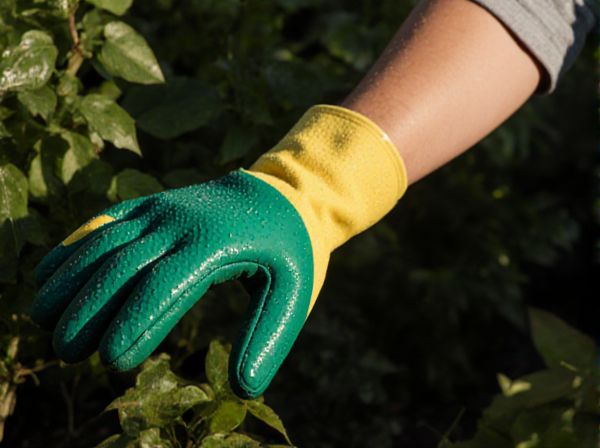
Wet Shade vs Dry Shade Illustration
Wet shade occurs in areas where moisture is abundant but sunlight is limited, leading to unique challenges for plant growth due to damp, shaded conditions. Dry shade refers to shaded locations with limited moisture, requiring plants to tolerate low light and drought stress simultaneously. Choosing appropriate plants for each environment ensures healthy landscapes despite varying light and moisture levels.
Table of Comparison
| Aspect | Wet Shade | Dry Shade |
|---|---|---|
| Definition | Shaded areas with moist soil conditions | Shaded areas with dry, well-drained soil |
| Common Plants | Ferns, Hostas, Astilbes | Heuchera, Lamium, Pulmonaria |
| Soil Requirements | Consistently moist, rich organic matter | Well-drained, sandy or loamy soil |
| Watering Needs | Frequent watering to maintain moisture | Moderate to low watering |
| Humidity | High humidity preferred | Low to moderate humidity |
| Light Intensity | Deep shade, minimal direct sunlight | Light to moderate shade, occasional sun |
| Use Cases | Woodland gardens, near water sources | Under trees, shady borders in dry locations |
| Maintenance | Regular mulch, moisture monitoring | Soil aeration, occasional watering |
Understanding Wet Shade vs Dry Shade in the Garden
Wet shade and dry shade differ primarily in soil moisture levels, impacting plant selection and garden health. Wet shade areas have moist, often poorly drained soil beneath canopy cover, favoring moisture-tolerant plants like ferns and hostas. Dry shade features well-drained, dry soil under tree or shrub shadows, requiring drought-resistant species such as certain grasses and groundcovers to thrive.
Key Differences: Wet Shade and Dry Shade Explained
Wet shade occurs in areas with poor drainage, leading to moist, shaded environments that support moisture-loving plants such as ferns and hostas. Dry shade exists in well-drained locations with limited sunlight, favoring drought-tolerant species like oak trees and certain grasses. Understanding moisture levels and soil conditions is crucial for selecting appropriate plants for wet shade versus dry shade landscapes.
Common Challenges in Wet Shade Gardening
Wet shade gardening often faces challenges such as poor soil drainage, which leads to root rot and fungal diseases in many plants. Limited sunlight combined with excess moisture creates a breeding ground for moss and mold, disrupting plant health. Managing soil aeration and selecting water-tolerant, shade-resistant species like hostas or ferns can help overcome these common obstacles.
Unique Issues Facing Dry Shade Areas
Dry shade areas face unique challenges such as poor soil moisture retention and limited organic matter, leading to stressed plant growth and reduced nutrient availability. These areas often suffer from increased soil compaction and insufficient sunlight, which hinders photosynthesis and limits the types of vegetation that can thrive. Managing dry shade environments requires selecting drought-tolerant, shade-adapted plants and improving soil conditions through mulching and aeration to enhance water infiltration and root development.
Top Plant Choices for Wet Shade Gardens
Top plant choices for wet shade gardens include hostas, astilbes, and ligularia, which thrive in moist, shaded environments with poor drainage. Ferns such as ostrich fern and royal fern also excel in wet shade due to their tolerance for saturated soil conditions. These plants not only add lush greenery but also enhance biodiversity in consistently damp, low-light areas of the garden.
Best Plants to Thrive in Dry Shade
Dry shade environments receive limited moisture and filtered sunlight, requiring drought-tolerant plants with deep root systems and slow growth rates. Ideal plants for thriving in dry shade include ferns like Polystichum munitum, shade-tolerant grasses such as Carex pensylvanica, and woody shrubs like Mahonia aquifolium, all adapted to low water availability and reduced light conditions. These species enhance garden biodiversity while minimizing irrigation needs, making them optimal choices for sustainable dry shade landscapes.
Soil Preparation for Wet Shade Success
Soil preparation for wet shade success involves selecting and amending soil to improve drainage and nutrient availability in consistently moist, low-light environments. Incorporate organic matter such as compost to enhance soil structure and retain moisture without waterlogging, while ensuring a slightly acidic to neutral pH to support shade-tolerant plant species. Proper soil preparation mitigates root rot risks and promotes healthy growth of vegetation adapted to wet shade conditions.
Improving Drainage in Shaded Areas
Improving drainage in shaded areas requires addressing the unique challenges of wet shade, which often retains excess moisture leading to soggy soil and root rot, unlike dry shade that suffers from lack of water retention. Installing French drains or grading the soil can enhance water flow and prevent pooling in wet shade spots. Incorporating organic matter such as compost improves soil structure and promotes better drainage while supporting plant health in both wet and dry shaded environments.
Tips for Watering in Shade: Wet vs Dry Advice
Watering in wet shade requires careful attention to drainage and soil moisture, as excessive water can lead to root rot and fungal diseases; using mulch helps retain moisture without oversaturating the soil. In dry shade, focus on deep, infrequent watering to encourage roots to grow deeper and improve drought tolerance, emphasizing the use of drought-resistant plants and soils with good water retention. Adjust watering schedules based on weather conditions, soil type, and plant species to maintain healthy growth in both wet and dry shade environments.
Designing Shade Gardens for Moisture Conditions
Designing shade gardens requires careful consideration of moisture conditions, distinguishing between wet shade and dry shade environments. Wet shade gardens thrive in areas with consistent moisture from sources like tree drip lines or shaded wetlands, favoring moisture-loving plants such as ferns, hostas, and astilbes. Dry shade gardens, often found under dense tree canopies with limited water, demand drought-tolerant species like epimedium, hellebores, and mosses adapted to lower moisture levels and deeper shade.
Wet Shade vs Dry Shade Infographic

 gardendif.com
gardendif.com